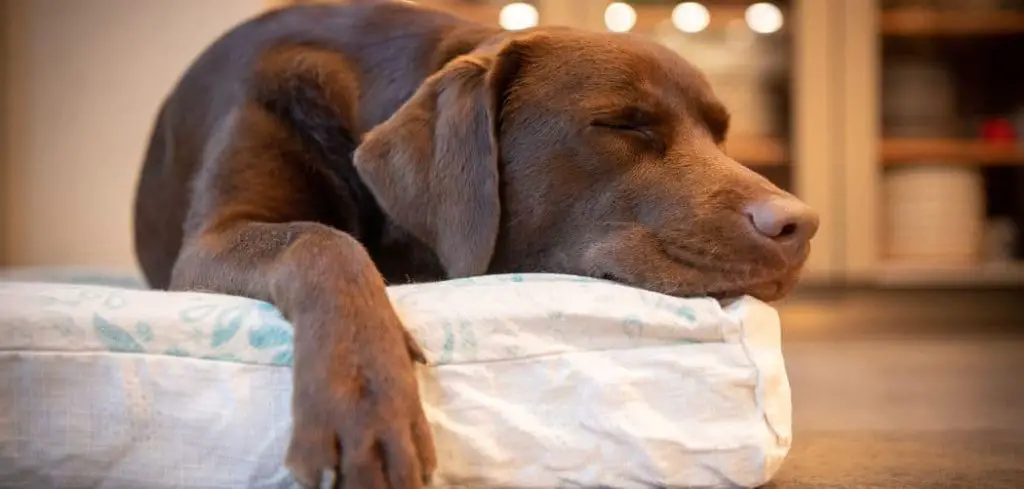Administering buprenorphine to dogs is common for managing pain, especially after surgery or injury. However, noticing your dog panting while on this medication can be concerning for any dog owner.
We outline the common reasons why dogs may pant while on buprenorphine, what you can do at home, and when to seek veterinary help.
Dog Panting and Buprenorphine — Why It Happens
Dog panting while on buprenorphine happens because this pain medication, which is an opioid, affects the dog’s central nervous system. It can alter breathing patterns, body temperature regulation, and cause mild anxiety or restlessness as a side effect.
Panting may also occur because buprenorphine can make some dogs feel sedated yet uncomfortable at the same time, leading them to breathe faster to compensate.
In most cases, panting after buprenorphine is a known side effect rather than a sign of overdose, but if the panting is extreme, persistent, or paired with other symptoms like pale gums, severe lethargy, or collapse, it may signal a serious reaction and should be checked by a veterinarian immediately.

Dog Panting and Buprenorphine: Common Causes
Medication Side Effects
Buprenorphine is an opioid that can cause panting as a side effect in dogs. Opioids can affect the central nervous system, altering normal respiratory patterns.
Panting may occur even if the dog is otherwise calm or resting.
Owners may notice that panting begins shortly after administration and can persist for several hours depending on dosage and metabolism.
While mild panting is usually expected, sudden or extreme panting may indicate an adverse reaction requiring veterinary evaluation.
Read more: Dog Panting and Benadryl (When to worry and when it’s normal)
Pain or Discomfort
Panting while on buprenorphine may indicate that the drug isn’t fully controlling pain. Buprenorphine is effective for moderate pain, but some dogs may still experience discomfort from surgery, injury, or chronic conditions.
Signs to watch for include restlessness, whining, reluctance to move, or limping. Adjusting the dosage, adding complementary pain management strategies, or using additional veterinary-approved medications can help improve comfort.
Anxiety or Stress
Dogs may pant as a response to anxiety or stress, even when medicated. Being in a veterinary setting, recovering from surgery, or experiencing environmental changes can trigger nervous panting.
Accompanying signs may include pacing, trembling, hiding, or excessive attention-seeking.
Providing a calm, quiet space and using comfort techniques like gentle petting or pheromone diffusers can reduce stress-induced panting.
Overheating or Environmental Factors
Panting can also occur if the dog becomes too warm, especially after being sedated or medicated.
Buprenorphine can sometimes increase sensitivity to temperature changes, making dogs more prone to overheating.
You should ensure your dog has access to cool areas, fresh water, and avoid intense physical activity while recovering. Excessive panting in a hot environment may signal heat stress, which requires immediate attention.
Interaction with Other Medications
Dogs on multiple medications may experience increased panting due to drug interactions.
Buprenorphine, when combined with sedatives, anti-anxiety medications, or other painkillers, may amplify side effects such as panting, lethargy, or dizziness.
Careful monitoring and communication with your veterinarian are essential to safely manage multiple medications and ensure no adverse interactions occur.
Underlying Medical Conditions
Panting while on buprenorphine can sometimes reveal underlying health issues. Respiratory disorders, heart conditions, or metabolic problems may become more noticeable when the dog’s normal coping mechanisms are altered by medication.
Symptoms may include labored breathing, coughing, pale gums, or fatigue. A veterinary evaluation can help distinguish between medication side effects and medical conditions needing treatment.
Read more: Dog Panting After Medication (Signs that require a vet visit)
What to Do If Your Dog Is Panting on Buprenorphine
Observe your dog carefully, noting when the panting occurs in relation to medication administration.
Ensure a calm, quiet environment to minimize stress and support recovery.
Provide easy access to water and a cool resting area, especially if panting appears linked to heat or activity.
Avoid vigorous exercise until your dog returns to normal behavior and the effects of medication stabilize.
Contact your veterinarian if panting seems excessive, prolonged, or accompanied by other concerning signs. Adjusting dosage or timing may help alleviate side effects safely.
When to Call or Visit Your Vet
Seek veterinary attention if your dog shows:
Persistent or extreme panting not easing after the drug’s expected effect period
Difficulty breathing, wheezing, or signs of respiratory distress
Pale, blue, or discolored gums
Unusual lethargy, disorientation, or signs of pain
Vomiting, diarrhea, or other gastrointestinal distress related to medication
Prompt evaluation ensures your dog’s safety, proper pain management, and the prevention of medication-related complications.
Read more: Dog Panting and Prednisone (Why it happens)
Key Takeaway
Panting in a dog receiving buprenorphine can be a normal side effect, a sign of ongoing pain, or an indication of stress or another medical concern.
Careful observation, providing a calm environment, and consulting your veterinarian when needed will help ensure your dog recovers safely while remaining comfortable.
Monitoring for unusual or prolonged panting is essential to safeguard your dog’s health while on medication.
